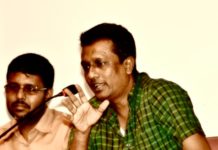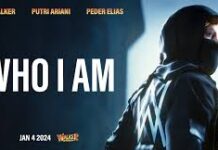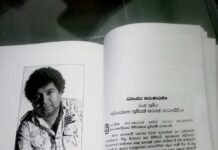Sirisena Cooray passed away at the age of 90. There is so much myth about him in political literature. But no one has analyses him. In 87-89 during the Civil War in the South, how was his role assessed? Since 1987, the J.R. Jayewardene regime was unable to control the country’s civil war. The reason was a lack of understanding of the political dimension of the civil war.
In early 1989, Premadasa became President and Wijeweera and Gamanayake were assassinated later that year. Thus ended the insurgency in the South.
The biggest challenge for political parties in Sri Lanka is not recognizing who is really involved in politics. For example, in 1989, the worst period of the insurgency , there was a widespread belief among the public that Ranjan Wijeratne was the ideological operator of the insurgency. The other party in the struggle, the JVP, also believed it.
In the insurgency in the South, in which the Sinhalese were divided, the ideological mechanism was not easy to handle. By 1989, the Premadasa regime realized that there was no point in opening camps all over the country and opening checkpoints everywhere. Suppressing isolated incidents from time to time was also in vain. The deactivation of the strikes was also in vain.
As a result, a new center called ‘Ops Combine’ was established. It was called the ‘Combined Command Center’. [RDF] Major General Norman Vaidyarathne became its military leader and Ranjan Wijeratne became the political authority.
Their main strategy was to suppress the insurgency using ‘Small Teams’. There, four soldiers with a corporal in a Pajero roamed the streets and arrested the suspects. Comrade Chulananda Samaranayake writes in his memoirs about such an incident. This idea is a counter-strategy taught at the American Military Academy. What is being done there is to intimidate the lower members of the anti-government movement. But it does not frighten a society.
Neither God’s law nor human law applies to intimidating a society. For that, a devil law must be found. This law was invented by Sirisena Cooray. He called his theory “cutting diamonds from diamonds”. He did it in the format – something can be destroyed by using the same thing. The military intelligence service, including General Vaidyarathne, and Sirisena Cooray spent the day intoxicated; one of the captured middle-level leaders distracted them by telling unspoken stories about the other. With that, they briefly gained access to the main targets in the chain.
Sirisena Cooray was well aware that man is not a psychological animal. Because man’s unconscious is related to the other, he or she is related to the other in desire and example. Man, then, is a network, not a home (one entity). For example, Vaidyarathne and Cooray knew that Kadurupokuna, [1989- ] the armed leader of Colombo, would not betray their confidant, D. M. Ananda. So, what they did was to release some information from here and there about D.M. Meanwhile, D.M. ‘s woman affair was also used. The strategy went right, and it did not take long for D. M. to fall into the trap. Until I say this today, the JVP had no analysis of it and did not think of arming even for a joke.
To any leftist and progressive intellectual, Sirisena Cooray is a simpleton . What is the truth that has been missed by intellectuals who are fascinated by reality in general, including the JVP? What went wrong not only with the JVP leader but also with an anthropologist like ‘Bruce Kapferer ‘ about the building block of Sinhala thinking? [Ontology of Sri Lanka]
 Sirisena Cooray- Appearence as a Maya.
Sirisena Cooray- Appearence as a Maya.
According to the JVP leader, the people working in the State’s repressive apparatus, including the army, are, in the final analysis, Buddhist-minded people with moisture in their hearts. According to Kapferer, the Buddhist showcases his cruelty through the torture paintings and sculptures (thorns) in the temples he saw as a child. Therefore, what happens in the end is that the Buddhist meets the Buddhist. Mindful of the myths of the JVP leader and the savvy anthropologist, Sirisena Cooray and General Vaidyarathne pointed out to us that the intellectual examination of the rural Sinhala man is shaped by Western war films, detective stories, pastoral films about revenge and torture. (Another factor needs to be added to this. Sirisena Cooray is a former Colombo cinema manager. He used a rural youth who had watched western films to destroy the JVP’s rural youth.) Accordingly, Sirisena Cooray, who was no racist, defeated racism in the 1980s through Western thinking.
Therefore, his cruelty against racism is not a pathological one but an advanced ideology.
As soon as the JVP leadership collapsed in November, ‘Ops Combine/ was disbanded because the Premadasa regime had a program to attract the masses.
After 2009, the Rajapaksa’s lost such a political program. Instead, they replaced it with their ‘family’. As a result, the country was destroyed. Although Sirisena Cooray claimed 1956 as a defeat, when he died, his party also died of liberalism.
‘Existentialism’ (The ideology that there are no objective and universal fair values and that each person should create values for himself by living fully and responsibly in action and at all times.) of the 80s is dead in the new millennium. What reigns now is perversion. The future challenge for us is how to create a new Existentialism that provides relief to the poor without racism in a world without Sirisena Cooray.
By Deepthi Kumara Gunaratne.
Translation- Anuradha Kodagoda .




















